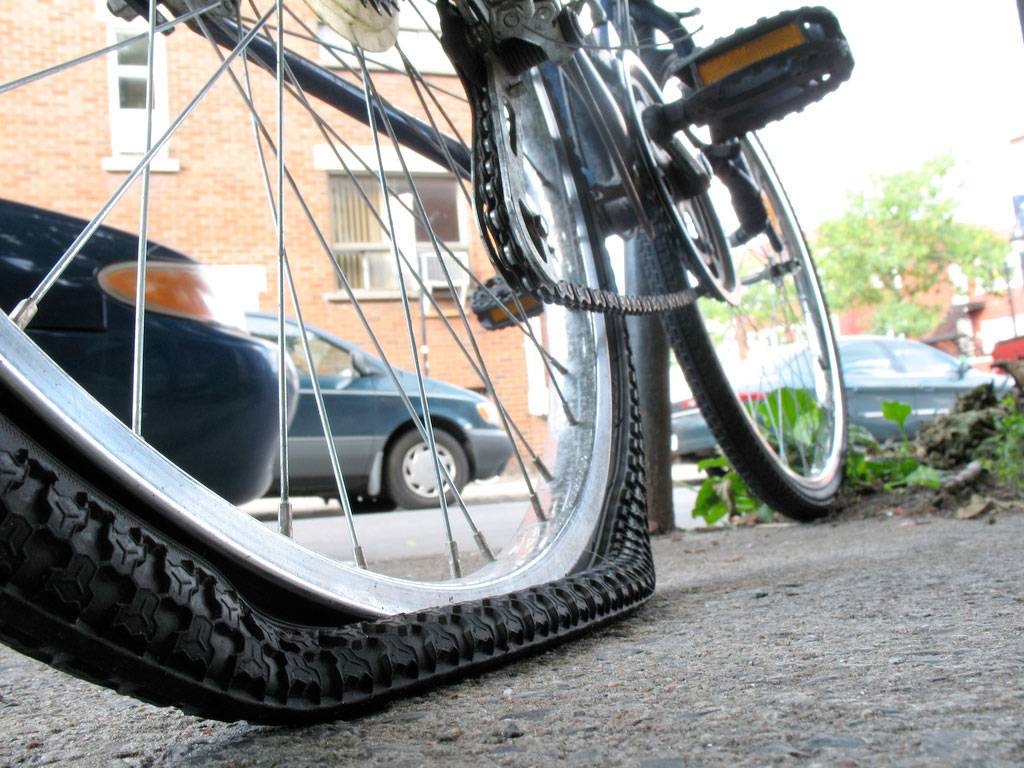
Flats suck, plain and simple. A friend and fellow cyclist has had two flats in about a week and I’ve had two flats in the past month. The last one for me was, of course, at the most inopportune time (aren’t they all). I was riding home from the Bike Project at 10 p.m. last night on St. Mary’s Road through the south part of campus. My rear wheel hit one of those nasty potholes that line campus roads and pinch flatted my rear tire on my fixed gear.
Of course I didn’t have a patch kit or pump and I probably would have struggled fixing it in the relative dark so I had to push it home. As a direct result, this week I have been inspired to discuss ways of making flats happen much less regularly. I have been lucky and have not had a flat for about five years until recently. Much of it is due to luck and my choice of equipment.
Here are some great tips to avoid flats (some are dirt cheap):
Proper tire pressure: Keep the right amount of air pressure in your tires — this is probably the cheapest way to prevent a flat. Having too little or too much air in your tires can result in slit-like punctures called snakebites. Look on the sidewall of your tires and see what the recommended pressure range is for the tire and stay within it. You will have to check it about once a week because tubes tend to leak air over time.
Avoid obstacles: Try to avoid obstacles such as potholes, shiny items such as glass and metal, nails, etc. on the road. Also, it is usually advisable to avoid grass and weeded areas, as many have thorns that could puncture your tire.
Find the cause of the flat: When you have a flat, find out why you got it.
- Check the inside of the tire for cuts, punctures, and wear.
- Check the sidewall to make sure there are no cuts or it is not worn through.
- Verify your rim strip is in good condition.
- Make sure there are no spokes or nipples protruding which could puncture the tube.
Tires: Typically, a good tire will provide better protection against flats than one that is a strictly economy tire, advice both myself and my friend should heed. Good tires may have belts inside them that are made of Kevlar or steel that resist thorns, glass and other obstacles. While not flat-proof, when it comes to tires, a decent well-made tire is a better, more long-lasting purchase than those made from cheap materials that save a few bucks.
Industrial strength tubes: These are a bit costly but they will probably make up for it in their life expectancy. They are much thicker and resist puncture. Weight conscious cyclists (those that worry about the weight of their bike, that is) need not apply, as they will add to the weight of the bicycle.
Tire Protectors: This product is simply a band that goes on in between your tire and tube offering a layer of protection. One brand of these is Mr. Tuffy. These tend to work but add a bit of additional weight. They also can be difficult to fit if you have a tight fit for the tire on your rim anyway. They also do not provide protection against sidewall punctures.
ITEMS I DON’T RECOMMEND
Slime: This is a green liquid that you put into the tube that is supposed to seal any leaks. Take the time and save money and either replace the tube or buy a simple cheap bicycle tire patch kit and fix the tube right. These can also leak and make a mess. You have been warned, don’t get slimed.
Car inflation ‘fix-a-flat’ products: These are not designed for bike tires and take it from me, don’t seal anything on a bike tube. They are a mess and could mess up your rim from all the sealant.
Solid Tires: Some folks rave about them, many hate them. I have never used these tires which are solid foam instead of having air in them. I can’t imagine that they would be light or provide a comfortable ride. They will guarantee that you do not get a flat though.
While all of these products and ideas these may help avoid a flat or reduce their frequency, there is no guarantee that you won’t get a flat. That is why it is important to have a pump or a CO2 inflator, and a spare tube or two or — if you are patient — a patch kit in a bag on your bike. It can be the difference from being able to fix your bike and a long two mile walk at 10 p.m. pushing your bike. Trust me, it isn’t fun at all.








